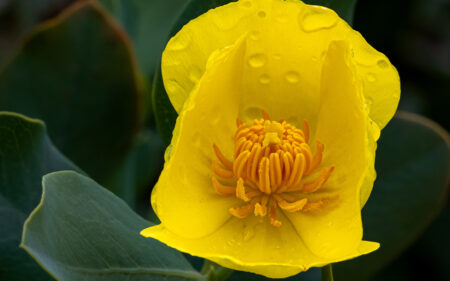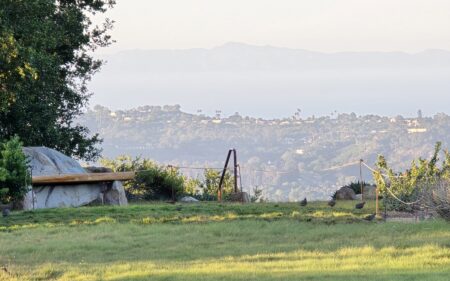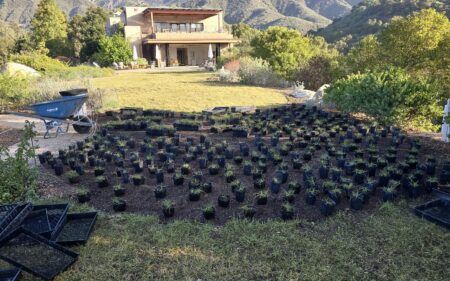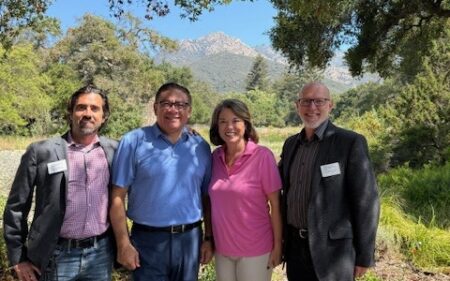Future-Proofing Food Webs: A Bold Habitat Restoration Experiment at Elings Park
Invasive species are one of the biggest contributors to a decline in biological diversity that is happening across the globe, and we’re seeing this play out right here on the central coast at Elings Park.
Having been tilled and farmed years ago, the southern Elings Park Mesa has a long legacy of soil disturbance. This type of disturbance damages the soil structure, reducing air space, and causing water to run off instead of soaking in. This means more erosion and less groundwater recharge. Repeated tillage also depletes soil nutrients and reduces helpful microorganisms. Weeds thrive in these conditions, and not surprisingly, Elings Park has some of the world’s worst non-native invasive plants.
Invasive plants crowd out native plants and typically don’t support the rest of the food web as well as native plants. Some of them, like the European mustard so plentiful on the Elings Mesa, produce chemicals that hinder the germination of other plants. Others increase fire frequency, like the annual grasses from the Mediterranean region that are so ubiquitous in California and across the Mesa.
Transforming the Elings Mesa from a sea of weeds to a diversity of native plants will better support the web of life – from beetles to bees to birds and bobcats. It will also help nature deliver the services we depend on, like clean water and nutrient cycling. We are starting by transforming one acre at Elings Park and approaching it as a science experiment. We have begun monitoring the soils, the plants, the bugs, and the birds and will continue for at least three years (we started the spring before the transformation began). What we uncover will guide us in restoring the rest of the Elings Mesa, and help us and other restoration practitioners to do this work even better going forward.
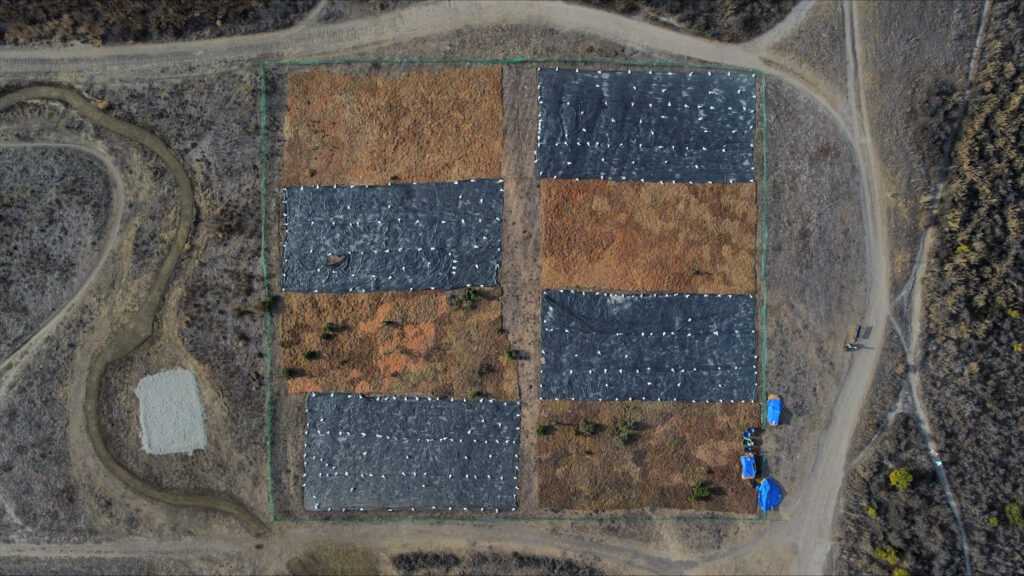
Choosing an Experimental, Climate-Forward Plant Palette
Under high CO2 emissions scenarios, computer models tell us that Santa Barbara will feel more like Glendale by 2080. This means it could be 5.9 degrees F higher, and 25.2% drier. Under these conditions, our familiar, foundational coast live oak (Quercus agrifolia) will likely struggle throughout the central coast by the year 2060. This reality is making us consider: In this future climate, which plants will thrive without supplemental water?
To answer this, we can look to hotter, drier communities already found along the southern California coast which are still adapted to regular fog. The Maritime Cactus Scrub community used to cover much of this area, and is still found in pockets here and there. This community supports now rare species like Cliff Spurge (Euphorbia misera), Shaw’s Agave (Agave shawii), Golden-Spined Cereus (Bergerocactus emoryi), and California Boxthorn (Lycium californicum). These plants have the additional advantage of being better defended against the voracious rodent herbivores that are plentiful at Elings Park. We’ve added some of these southern species to our restoration plant palette as part of our scientific experiment. We’ll monitor their use by insects and birds to see if the critters utilize them as much as their more local brethren. We’ll also monitor survival and growth as well.
While translocating species to the north is a bold move, Elings Park’s placement at the center of an urban environment makes it safer to experiment. Indeed, restoration ecologists have found that in disturbed areas like these, we have to get more creative. The cat is already out of the bag, so to speak, in this area since the surrounding urban landscaping contains plenty of novel plant species and genetic strains. Of course, we still aim to do no harm, so these species have all been vetted by our geneticists and scientific advisors to avoid adverse effects on the local gene pool. For a look at our plant palette for Elings Park, please press the button below.
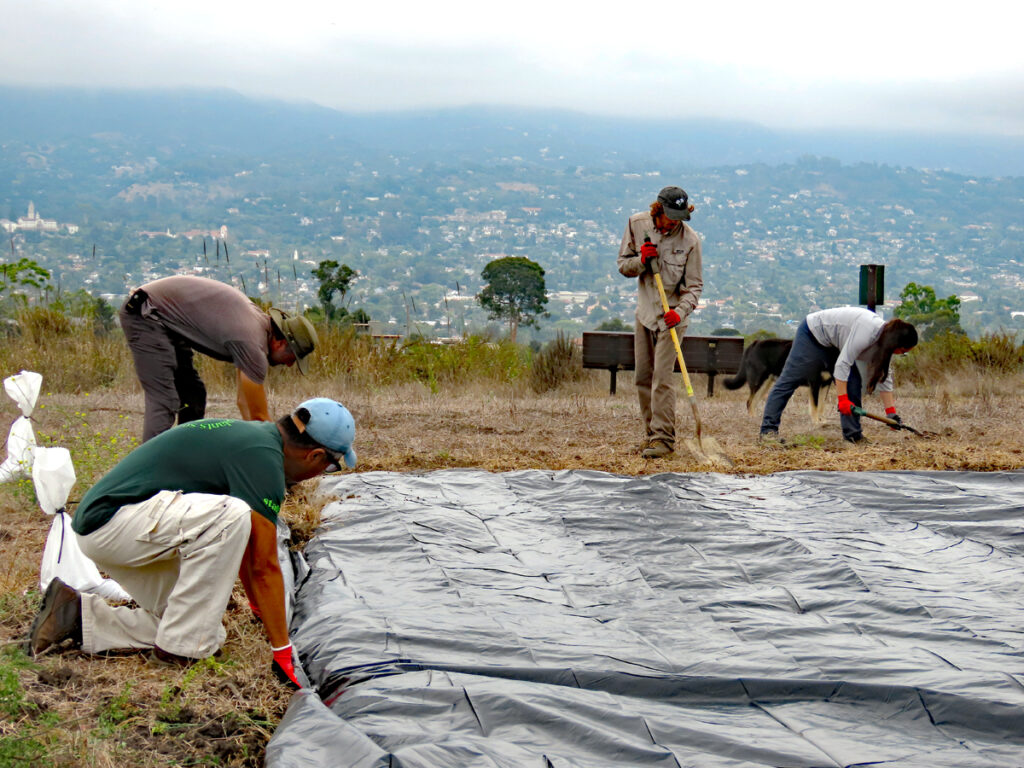
Investigating Weed Control Trade-Offs
Habitat restoration is much more than just getting plants in the ground. Our larger goal is to restore biological diversity throughout the food web as well as important ecosystem functions like watershed health. But which common weed control methods do these things better? It’s surprising how little we know.
One common method of controlling weeds is called sheet mulching, or lasagna mulching. It entails adding a layer of cardboard covered by a thick bed of mulch. This process smothers the weeds and prevents their seeds from germinating. Another process is tarping. This process utilizes black plastic to deny light and increase heat, which kills many weeds outright along with some of their seeds.
Since these two methods likely have different tradeoffs for the soils, plants, bugs, and birds, we’re investigating the impacts of all four as part of our restoration work. To do this, we’re comparing characteristics of the soil like water infiltration rate and decomposition, plant survivorship and growth, soil and litter invertebrates, and bird behaviors over time to determine their relative benefits. We’ll also consider the costs of both time and materials to undertake these two treatments. Our results will help restoration and land managers determine which method is best for achieving their goals within their cost constraints. It is likely that a combination of the two yields the best balance of benefits.
Do You Want to Help Restore Elings Park?
With the help of many volunteers, we completed the weed treatments this past October through December (2023), and started planting! There are lots of ways to help:
- You can volunteer to help plant this January and control the inevitable weeds that survived our pre-treatments in the following months.
- You can contribute at any time by being a community scientist, using the app iNaturalist to observe plants and animals at the site. Observations of plant-animal interactions are extra useful. Check out the iNaturalist California Pollination Project and learn how to contribute!
- You can also learn and grow with us by attending our monthly Nature Walks at Elings Park.
- You can plant native plants at home. This supports the bees, butterflies, birds, and the rest of the web of life. It also helps tackle two of the main causes of biodiversity loss: development and non-native invasive species.
If we all do our part, the increased biodiversity that results will have the wonderful side benefit of providing more resilience to global change. We look forward to seeing you at Elings Park or the Garden’s native plant nursery!
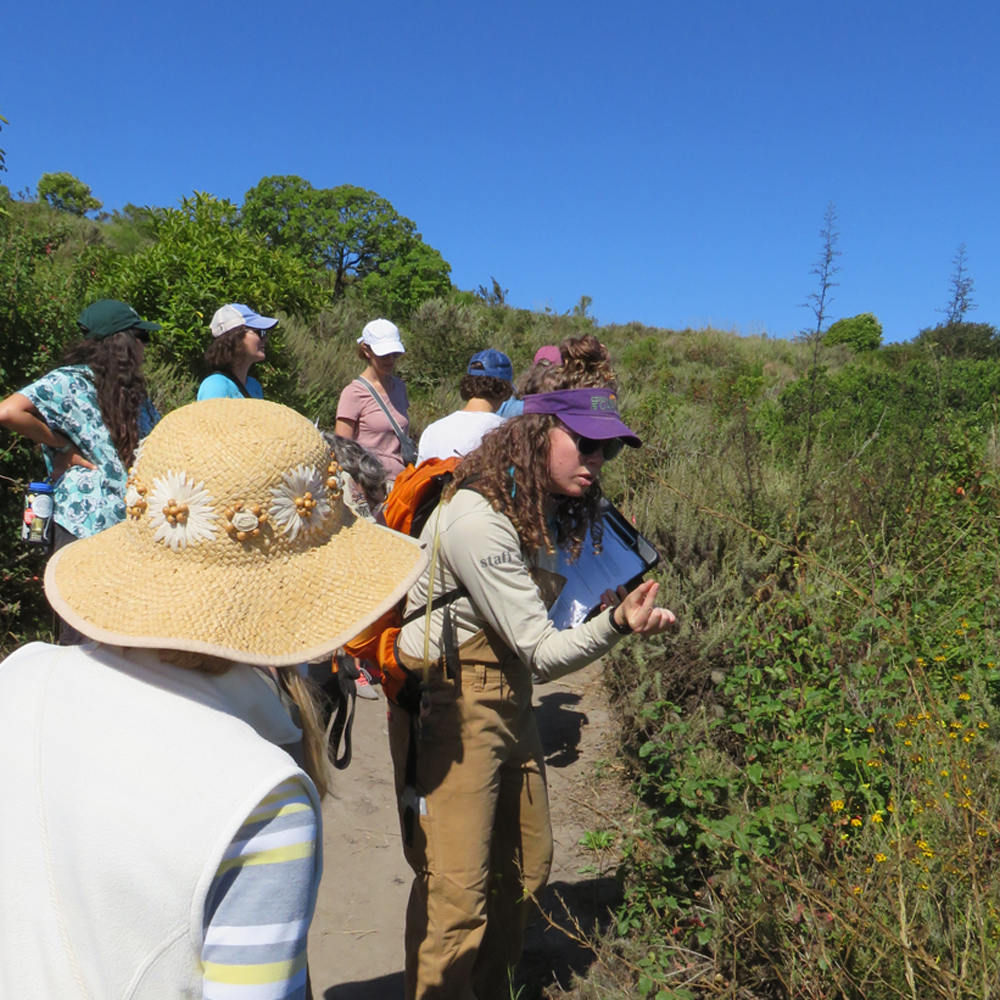
 Donate
Donate
